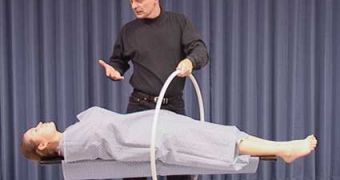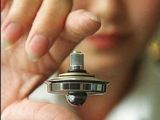In a reality flooded by Harry Potter and science fiction movies, levitation has turned into a fact. The same physicists that showed last year that invisibility cloaks are feasible, now have turned to levitation.
The team at the University of St Andrews, Scotland, has made an 'incredible levitation effects' by engineering the natural powers that usually make objects stick together. Professor Ulf Leonhardt and Dr Thomas Philbin have found a method of reversing the physical phenomenon named Casimir force, so that it repels instead of attracting.
The finding could pave the way to frictionless micro-machines with moving parts that levitate. But the same effect could be employed to levitate bigger objects too, even a human. The Casimir force is part of the quantum mechanics, which studies the world of atoms and subatomic particles that is not only the most "glamorous" part of physics but also the most puzzling.
The Casimir force is not the result of electrical charge or gravity, but of the fluctuations in all-pervasive energy fields in the empty space between the objects, determining the atoms to stick together, and is at the base of the "dry glue" effect that enables a gecko lizard to walk on vertical walls or across a ceiling.
With the help of a special lens already developed, the team has manipulated Casimir force to repel, rather than attract. As the Casimir force causes many problems for nanotechnologists, attempting to create for example electrical circuits and tiny mechanical devices on silicon chips, the team believes this finding could initially be employed at the beginning to impede tiny objects from sticking to each other.
"The Casimir force is the ultimate cause of friction in the nano-world, in particular in some microelectromechanical systems.", explained Leonahardt.
Nanotechnology systems are increasingly important in our daily life. Tiny devices trigger a car airbag to inflate, or power 'lab on chip' devices are employed for chemical analysis (including drug testing). The discovery could make micro and nanomachines run smoother and with less/no friction at all.
"Though it is possible to levitate objects as big as humans, scientists are a long way off developing the technology for such feats. The practicalities of designing the lens to do this are daunting but not impossible and levitation could happen over quite a distance", Philbin said.

 14 DAY TRIAL //
14 DAY TRIAL // 
